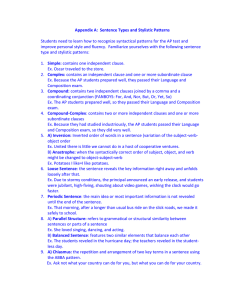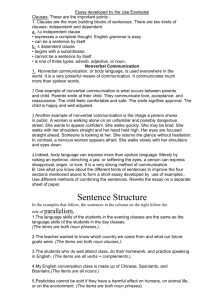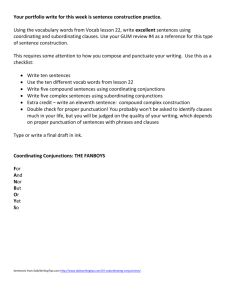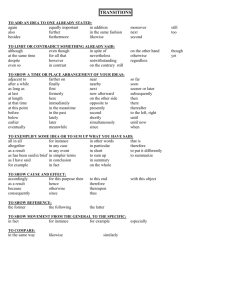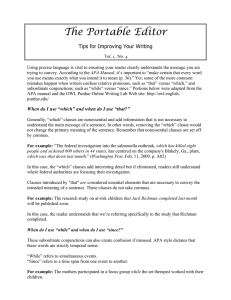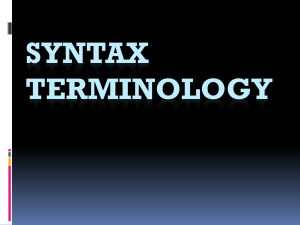Name: A.P. English Literature: Buckley Sentence Types and
advertisement
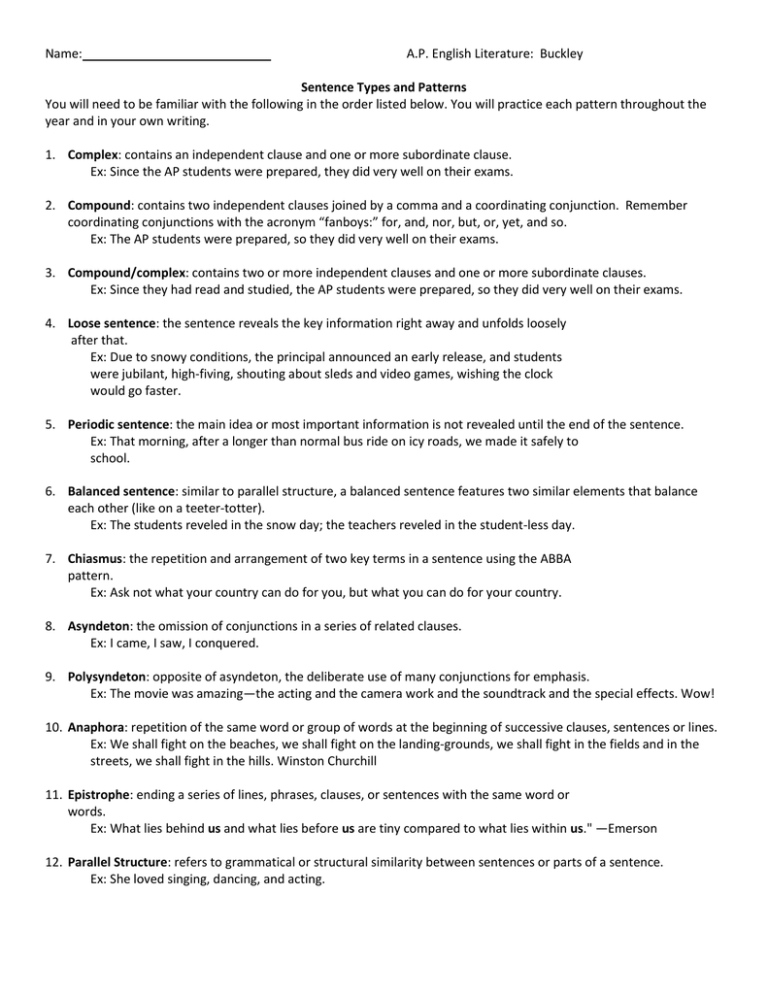
Name: A.P. English Literature: Buckley Sentence Types and Patterns You will need to be familiar with the following in the order listed below. You will practice each pattern throughout the year and in your own writing. 1. Complex: contains an independent clause and one or more subordinate clause. Ex: Since the AP students were prepared, they did very well on their exams. 2. Compound: contains two independent clauses joined by a comma and a coordinating conjunction. Remember coordinating conjunctions with the acronym “fanboys:” for, and, nor, but, or, yet, and so. Ex: The AP students were prepared, so they did very well on their exams. 3. Compound/complex: contains two or more independent clauses and one or more subordinate clauses. Ex: Since they had read and studied, the AP students were prepared, so they did very well on their exams. 4. Loose sentence: the sentence reveals the key information right away and unfolds loosely after that. Ex: Due to snowy conditions, the principal announced an early release, and students were jubilant, high-fiving, shouting about sleds and video games, wishing the clock would go faster. 5. Periodic sentence: the main idea or most important information is not revealed until the end of the sentence. Ex: That morning, after a longer than normal bus ride on icy roads, we made it safely to school. 6. Balanced sentence: similar to parallel structure, a balanced sentence features two similar elements that balance each other (like on a teeter-totter). Ex: The students reveled in the snow day; the teachers reveled in the student-less day. 7. Chiasmus: the repetition and arrangement of two key terms in a sentence using the ABBA pattern. Ex: Ask not what your country can do for you, but what you can do for your country. 8. Asyndeton: the omission of conjunctions in a series of related clauses. Ex: I came, I saw, I conquered. 9. Polysyndeton: opposite of asyndeton, the deliberate use of many conjunctions for emphasis. Ex: The movie was amazing—the acting and the camera work and the soundtrack and the special effects. Wow! 10. Anaphora: repetition of the same word or group of words at the beginning of successive clauses, sentences or lines. Ex: We shall fight on the beaches, we shall fight on the landing-grounds, we shall fight in the fields and in the streets, we shall fight in the hills. Winston Churchill 11. Epistrophe: ending a series of lines, phrases, clauses, or sentences with the same word or words. Ex: What lies behind us and what lies before us are tiny compared to what lies within us." —Emerson 12. Parallel Structure: refers to grammatical or structural similarity between sentences or parts of a sentence. Ex: She loved singing, dancing, and acting.

